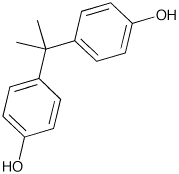

علم الكيمياء

تاريخ الكيمياء والعلماء المشاهير

التحاضير والتجارب الكيميائية

المخاطر والوقاية في الكيمياء

اخرى

مقالات متنوعة في علم الكيمياء

كيمياء عامة


الكيمياء التحليلية

مواضيع عامة في الكيمياء التحليلية

التحليل النوعي والكمي

التحليل الآلي (الطيفي)

طرق الفصل والتنقية


الكيمياء الحياتية

مواضيع عامة في الكيمياء الحياتية

الكاربوهيدرات

الاحماض الامينية والبروتينات

الانزيمات

الدهون

الاحماض النووية

الفيتامينات والمرافقات الانزيمية

الهرمونات


الكيمياء العضوية

مواضيع عامة في الكيمياء العضوية

الهايدروكاربونات

المركبات الوسطية وميكانيكيات التفاعلات العضوية

التشخيص العضوي

تجارب وتفاعلات في الكيمياء العضوية


الكيمياء الفيزيائية

مواضيع عامة في الكيمياء الفيزيائية

الكيمياء الحرارية

حركية التفاعلات الكيميائية

الكيمياء الكهربائية


الكيمياء اللاعضوية

مواضيع عامة في الكيمياء اللاعضوية

الجدول الدوري وخواص العناصر

نظريات التآصر الكيميائي

كيمياء العناصر الانتقالية ومركباتها المعقدة


مواضيع اخرى في الكيمياء

كيمياء النانو

الكيمياء السريرية

الكيمياء الطبية والدوائية

كيمياء الاغذية والنواتج الطبيعية

الكيمياء الجنائية


الكيمياء الصناعية

البترو كيمياويات

الكيمياء الخضراء

كيمياء البيئة

كيمياء البوليمرات

مواضيع عامة في الكيمياء الصناعية

الكيمياء الاشعاعية والنووية
Bisphenol A
المؤلف:
..................
المصدر:
LibreTexts Project
الجزء والصفحة:
.................
13-9-2019
1417
Bisphenol A
In the United States, single-serve bottled water is the fastest growing beverage of choice. However, drinking tap water creates less pollution and uses less energy and natural resources than transporting and manufacturing plastic water bottles. Unlike soda and other carbonated beverages, there is no deposit on water bottles and therefore fewer are recycled by consumers. Nationally, only 10% of plastic water bottles are recycled creating large quantites of waste. Many water bottles are apolycarbonate plastic made of Bisphenol A (BPA).

Figure 1: Bisphenol A
BPA was first synthesized by Thomas Zincke of the University of Marburg, Germany in 1905. Zincke did not propose uses for BPA however scientists discovered the many uses of BPA in 1953. Polycarbonate plastics became a commonly used commercial product in the 1950's.
BPA was created from a condensation reaction of phenol and acetone with hydrogen chloride, an acid catalyst, and a promoter such as methyl mercaptan. Once formed by this reaction, BPA is washed with water, neutralized with calcium hydroxide and distilled under vacuum. BPA can also be purified further by distillation and extractive crystallisation. Higher purity BPA is used to make polycarbonate plastics while the lower purity BPA is used to make Epoxy Resin. BPA's IUPAC name is 4,4'-dihydroxy-2,2,-diphenylpropane. It's chemical formula is C15H16O2. The production of BPA produces H2O (see image below) and therefore requires a condensation reaction for production.

Figure 2 The production of BPA
A concern with the use of BPA in water bottles is the potential for leaching into the water which is then consumed. When BPA is present in in the human body, it mimics the hormone estrogen and is capable of binding to estrogen receptors. In doing so, it changes the genes in the body that are expressed which triggers changes in hormone concentration, enzyme function and protein synthesis.
Using plastic water bottles that contain BPA is damaging both to the environment and human health. A green alternative to the use of plastic water bottles is filtered tap water carried in refillable stainless steel containers.
 الاكثر قراءة في مواضيع عامة في الكيمياء العضوية
الاكثر قراءة في مواضيع عامة في الكيمياء العضوية
 اخر الاخبار
اخر الاخبار
اخبار العتبة العباسية المقدسة

الآخبار الصحية















 قسم الشؤون الفكرية يصدر كتاباً يوثق تاريخ السدانة في العتبة العباسية المقدسة
قسم الشؤون الفكرية يصدر كتاباً يوثق تاريخ السدانة في العتبة العباسية المقدسة "المهمة".. إصدار قصصي يوثّق القصص الفائزة في مسابقة فتوى الدفاع المقدسة للقصة القصيرة
"المهمة".. إصدار قصصي يوثّق القصص الفائزة في مسابقة فتوى الدفاع المقدسة للقصة القصيرة (نوافذ).. إصدار أدبي يوثق القصص الفائزة في مسابقة الإمام العسكري (عليه السلام)
(نوافذ).. إصدار أدبي يوثق القصص الفائزة في مسابقة الإمام العسكري (عليه السلام)


















